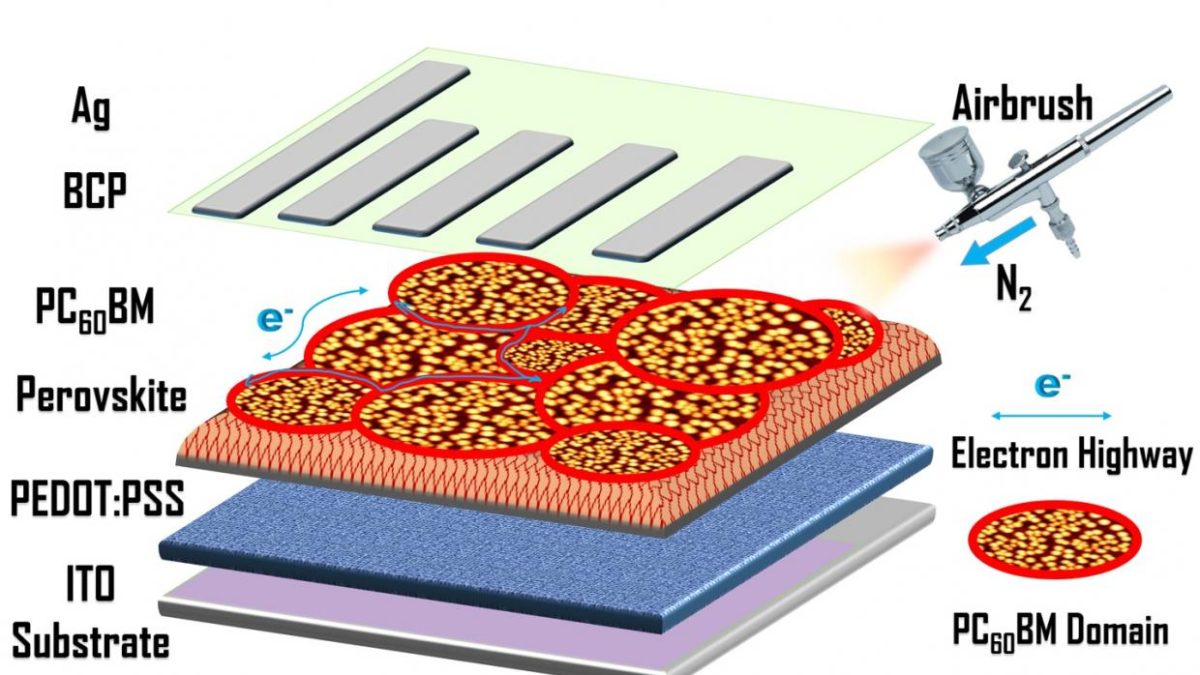Researchers presented a perovskite cell boasting a conversion efficiency of 20.9% – the world’s highest for a cell of this kind. The team comprises members from the Universities of Oxford, Cambridge, Surrey and Beijing.
According to the announcement, the team created a new technology called Solution-Process Secondary growth (SSG), which allows the cell voltage to be increased by a hundred millivolts, to 1.21 volts. This process, reportedly, does not compromise the quality of the cell, or the flow of electrical current through a device.
Furthermore, the process reduces non-radiative recombination of the solar cell, which deteriorates both energy and efficiency in perovskites.
Professor Ravi Silva, Director of the Advanced Technology Institute at the University of Surrey, said, “It is pleasing to see the Advanced Technology Institute join in this global project that could provide a solution to the need for a truly sustainable, cheap and clean energy resource. This was a monumental effort from leading laboratories, researchers, and institutions from across the world, all working together for the common good.”
Further research
The team was recently awarded the New Investigator Award, along with US$312,000 from the Engineering and Physical Sciences Research Council. The funds would be allocated as of August 1 until July 31 to investigate vertical heterojunction cells further.
Heterojunction cells are a standard field of application for perovskite-based cells. The technology layers a transparent perovskite-based cell on top of a silicon-based cell. Both cells can then participate in energy conversion. In recent weeks, this technology has prompted a range of world record conversion efficiencies of up to 30%.
Researchers at École polytechnique fédérale de Lausanne (EPFL) have also recently demonstrated a process of producing heterojunction cells that retain the silicon nanostructure. Perviously, the nanostructure had to be removed, which increase production costs.
Currently created perovskite cells are still notoriously unstable and lose greaterefficiency margins after only a few hundred hours of light exposure. This process inhibits the technology from achieving commercial maturity at this stage.
The European Union, via a variety of research funding programs, is heavily investing in the development of the technology. As the theoretical limitations for conversion efficiencies of silicon cells are approaching, researchers in the field are allocating resources to discover new ways of increasing conversion efficiencies to further lower the levelized cost of electricity (LCOE) of solar PV generation.
This content is protected by copyright and may not be reused. If you want to cooperate with us and would like to reuse some of our content, please contact: editors@pv-magazine.com.




1 comment
By submitting this form you agree to pv magazine using your data for the purposes of publishing your comment.
Your personal data will only be disclosed or otherwise transmitted to third parties for the purposes of spam filtering or if this is necessary for technical maintenance of the website. Any other transfer to third parties will not take place unless this is justified on the basis of applicable data protection regulations or if pv magazine is legally obliged to do so.
You may revoke this consent at any time with effect for the future, in which case your personal data will be deleted immediately. Otherwise, your data will be deleted if pv magazine has processed your request or the purpose of data storage is fulfilled.
Further information on data privacy can be found in our Data Protection Policy.